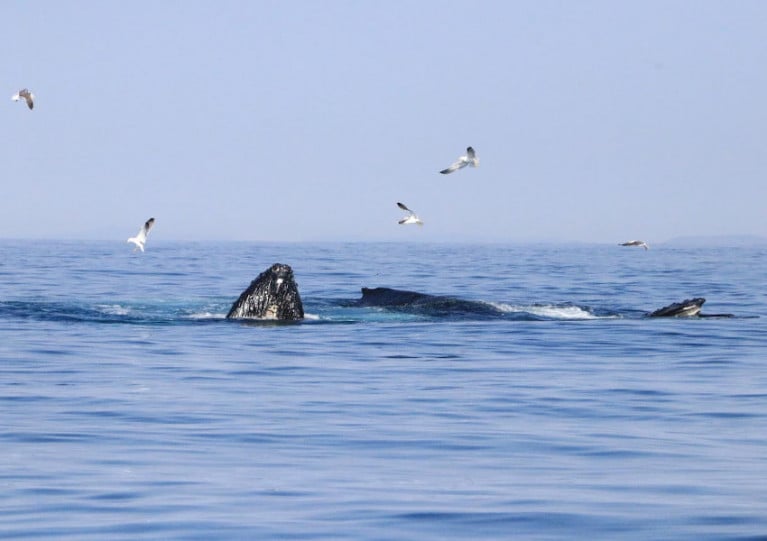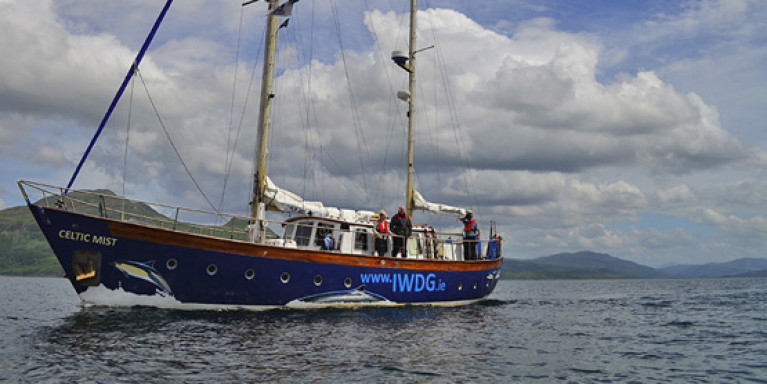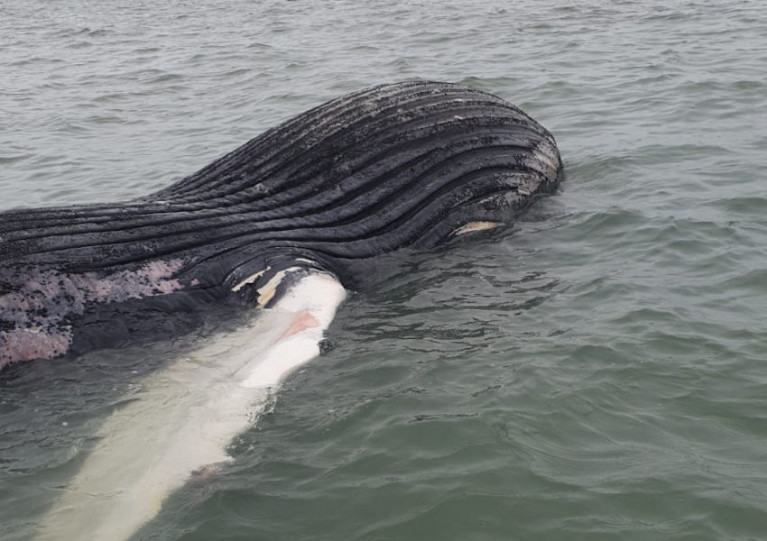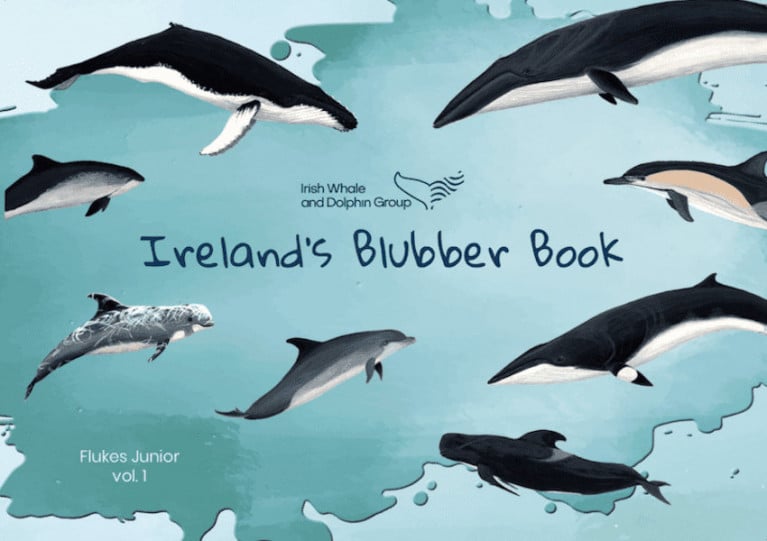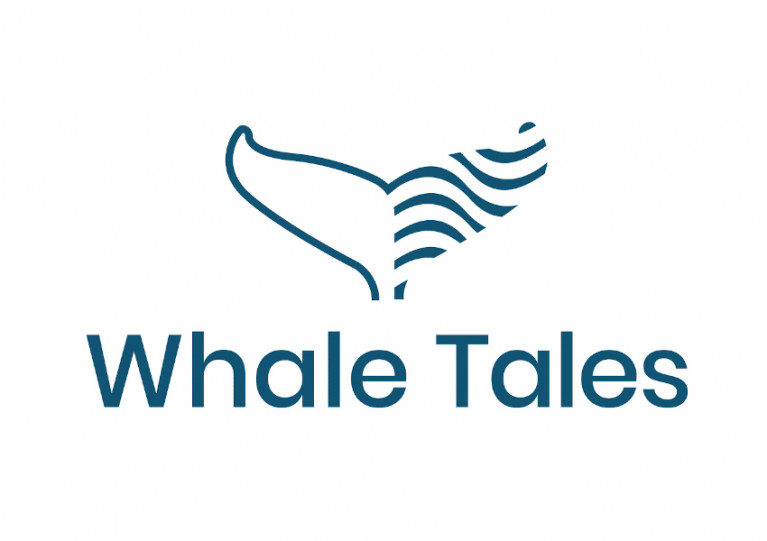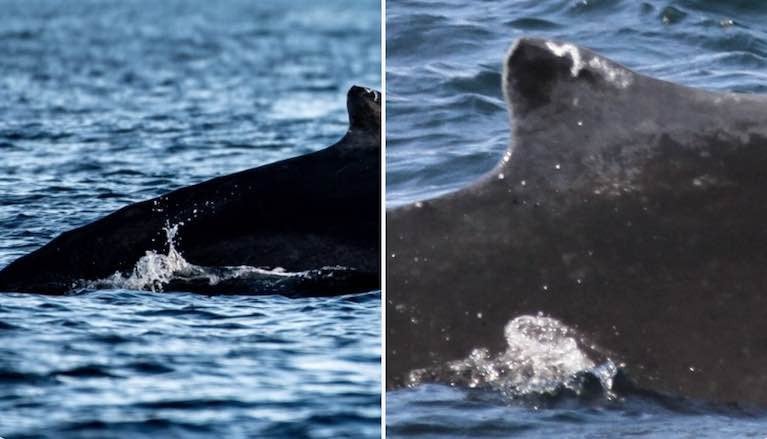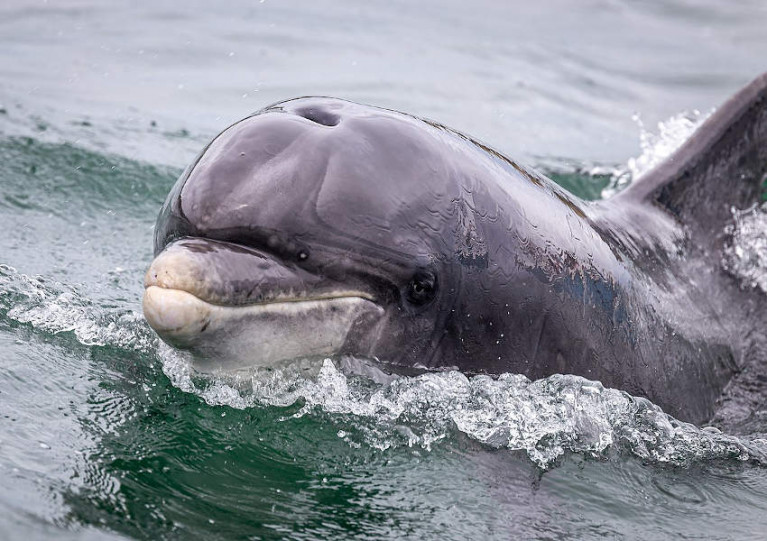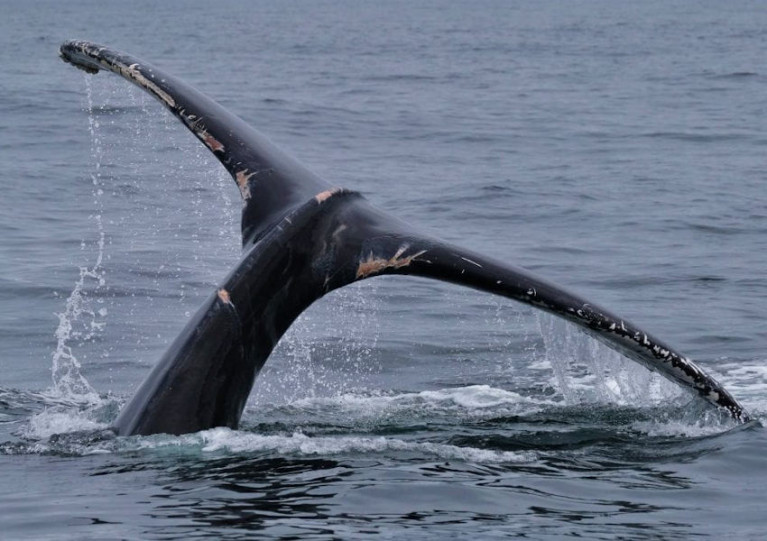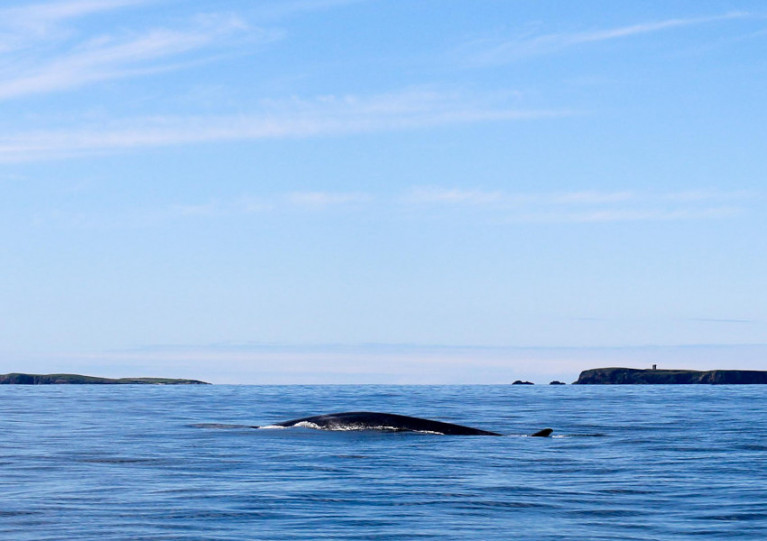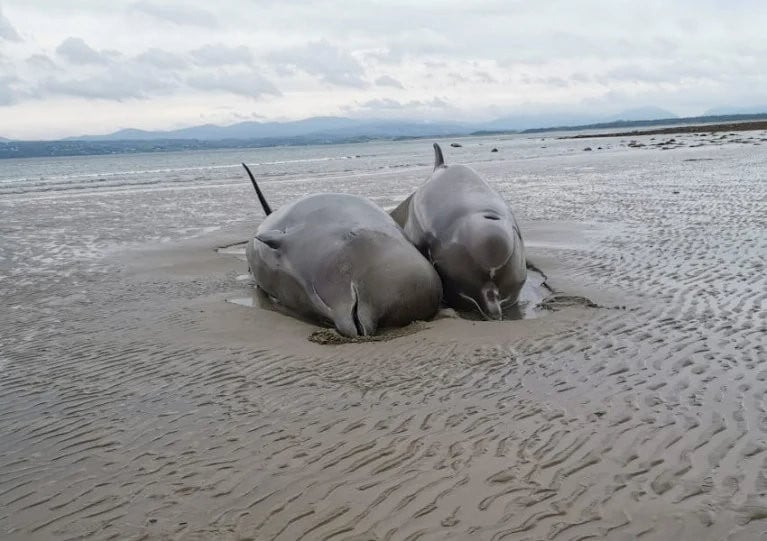Displaying items by tag: IWDG
The Irish Whale and Dolphin Group (IWDG) says it welcomes the new public consultation on expanding Ireland’s Marine Protected Areas.
As previously reported on Afloat.ie, the Government is aiming to have 30% of Ireland’s maritime area designated as Marine Protected Areas (MPAs) by 2030.
Current coverage is just 2.13%, the IWDG says, adding that there is at present no definition of an MPA in Irish law.
“We wish to see Ireland achieve their international commitments and legal obligations, and create a truly ecologically coherent network of well-managed and well resourced MPAs, that is representative and connected,” says Sibéal Regan, the IWDG’s Education and Outreach Officer.
“In that case, it must be defined and underpinned by the appropriate legislation.”
It’s also hoped that expanding Ireland’s designated conservation areas for marine wildlife will protect core habitats from encroachment by human activity such as fishing.
Research commissioned by the IWDG has identified a number of hotspots for dolphins, porpoise and whales within Ireland’s 12-nautical-mile limit.
These have informed the group’s recommendations for potential MPA sites around the coast, available on the IWDG website here.
Irish Whale & Dolphin Group Recruiting for Science Officer
The Irish Whale and Dolphin Group (IWDG) is seeking to recruit a Science Officer to join its core team based in the Shannon Dolphin Centre in Kilrush, Co Clare.
The Science Officer will be expected to work closely with the team in Kilrush and other officers in the IWDG; manage all IWDG archived data; identify relevant opportunities to collect and interpret data; contribute to conservation actions and policies; identify gaps in IWDG scientific knowledge and priorities for scientific research; and identify roles for the IWDG research vessel Celtic Mist.
Whoever assumes this role will also be encouraged to seek funding for research projects, and will contribute heavily to IWDG consulting, including desktop assessments and site fieldwork.
The successful applicant will have a strong scientific background and a track record of marine wildlife reseach, specifically cetacean research. The Science Officer will have practical experience of database management, good communication skills and knowledge of cetaceans in Ireland. Commercial fishing experience would be an asset, as would be knowledge of Marine Protected Areas.
Environmental consultancy experience is important as the successful candidate will also be contributing to consultancy outputs.
The contract will be for a maximum of three years, pending a successful annual review and the availability of funds. Salary will be commensurate with experience and qualifications and will align with recommendations for graduates in Ireland and is likely to be in the region of €30-40,000 per annum.
Applications including full CV should be sent to [email protected] with the subject line ‘Science Officer Position’ before 5pm on Friday 26 March.
Further details can be found on the IWDG website and interested candidates should contact [email protected] if they require more information.
Humpback Whale Washed Up in West Cork Is Dead Juvenile, IWDG Says
The carcass of a juvenile humpback whale washed ashore in West Cork is only the ninth such stranding of the species in Ireland, according to the Irish Whale and Dolphin Group (IWDG).
Sightings officer Pádraig Whooley confirmed from images of the marine wildlife specimen captured in Roaringwater Bay yesterday (Wednesday 24 February) that it was a juvenile male not previously recorded in Irish waters.
Such young whales are not unexpected close to our shores at this time of year, when adults of breeding age are either en route to or already at lower-latitude breeding sites such as Cabo Verde off West Africa.
“This is something that some young humpbacks can opt out of, as it’s a long track south to places like the Cabo Verde and with no hope of successfully breeding there is nothing much in it for them,” Whooley explains.
“So a cohort of young, independent humpbacks seem content to over winter at higher latitudes, where there is, or should be, plenty of food for them.”
In this case, however, Whooley says: “The images we’ve received so far suggest it is in rather thin condition and so it may not have fed for some time.
“There are no obvious signs of rope marks or net damage that may suggest entanglement in fishing gear, something that slow-swimming humpbacks that remain inshore are prone to. And there are no large traumas to suggest ship-strike. So as is so often the case, the circumstances underpinning this stranding are unclear.
“IWDG hope in the coming days to visit the site to take detailed measurements and get skin and blubber samples which can be used for genetics, contaminants and stable isotope analyses.”
Whooley adds that the IWDG is in liaison with the National Parks and Wildlife Service (NPWS) regarding examination of the carcass and its disposal, but suggests that because of its remote location “there is no strong case for removal”.
‘Ireland’s Blubber Book’ — A New Educational Resource for Young & Aspiring Marine Biologists
The Irish Whale and Dolphin Group (IWDG) has announced a new educational resource for young and aspiring marine science experts.
Ireland’s Blubber Book: Flukes Junior Vol 1 is a comprehensive workbook on cetaceans – the marine wildlife family comprising whales, dolphins and porpoise – found in Irish waters for primary school children aged between 9-12.
The new resource was created to support support the aims of the National Strategy on Education for Sustainable Development by IWDG education and outreach officer Sibéal Regan and illustrated by the talented John Joyce and Jim Wilson.
“We believe that the first step in becoming an ocean literate and informed society, starts with our youngest citizens,” the IWDG says in its introduction to the resource.
It adds that the workbook “will motivate and empower them throughout their lives to become informed active citizens, who take action for a more sustainable blue future”.
Teachers can use Ireland’s Blubber Book in a classroom setting, by going through the content and worksheets themselves.
But the IWDG is also offering to facilitate virtual workshops “making the experience even more interactive and engaging”.
Interested schools can contact Sibéal Regan at [email protected] to enquire about using this new book in their classroom.
It will also be available from the IWDG shop and will have its official launch online on the IWDG Facebook page next Thursday 28 January at 11am.
Book Your Virtual Place for IWDG’s Online ‘Whale Tales’ Conference
The Irish Whale and Dolphin Group’s annual conference is moving online — and broadcasting live from West Clare next Saturday 12 December.
Whale Tales is the annual meeting of the IWDG, where members and people interested in whales, dolphins and porpoises in Ireland are invited to join in a shared appreciation and admiration of these charismatic examples of marine wildlife.
This year, due to coronavirus restrictions. Whale Tales 2020 will be a virtual meeting, with a panel of local speakers calling in from the IWDG head office in Kilrush as well as special guests from further afield.
Among them will be Joy Reidenberg, from the hit TV programme Inside Nature’s Giants, who will discuss the topic of large whale necropsies and what we can learn from them.
In the afternoon, Mags Daly of the Shannon Dolphin Project will tell tales of her favourite mammals and share some of her stories from the Shannon Estuary this summer.
Registration is free for all who want to join in, but donations are welcome to support the IWDG in its recording and conservation efforts.
The full programme of events, including details of how to book your virtual spot, can be found on the IWDG website HERE.
First Irish & Scottish Humpback 'Match' Made By Irish Whale & Dolphin Group
The first Irish and Scottish Humpback 'match' has been made from images taken on the Shetland Islands at the weekend and then matched to photographs of the same whale off Ireland in 2015 and seen again off Irish coastal waters as recently as June 2020.
In an exciting development for Irish marine wildlife fans, the Irish Whale and Dolphin Group (IWDG) confirmed on social media this morning (see below) that the Irish Humpback whale named #HBIRL38 was photographed on 7 November off Whalsay, Shetland. This whale has been recorded 16 times by the IWDG over four years since July 2015 and was last seen off West Cork on 2 June 2020.
First humpback match between Ireland and Scotland.
— Irish Whale and Dolphin Group (@IWDGnews) November 11, 2020
Irish Humpback whale #HBIRL38 was photographed on 7 November by Ryan Leith off Whalsay, Shetland. This individual has been recorded 16 times by the IWDG over 4 years since July 2015 and was last seen off West Cork on 2 June 2020 pic.twitter.com/3JU2GgwYPn
First Irish ??Scottish ??????? Humpback 'match' from images taken here in #Shetland on Saturday by @DraatsiInk and me on Sunday 35km to the south. Nick Massett of @IWDGnews matched pics to an individual photographed off southern Ireland in 2015 and seen there as recently as June 2020. pic.twitter.com/M2asY8e26g
— Hugh Harrop Wildlife (@HughHarrop) November 10, 2020
Fungie’s Life in Dingle ‘Was Never Going to Last’
“It’s better this way, rather than Fungie wash up dead on the shores of Dingle Bay, [that he] just disappear.”
That’s the message from the Irish Whale and Dolphin Group’s (IWDG) chief executive as nearly two weeks have passed since Dingle’s longtime resident dolphin was last seen in the Co Kerry village.
Writing on the IWDG website, Dr Simon Berrow reminisces about his own encounters with the friendly bottlenose since his own arrival in the West of Ireland in 1988.
And he believes that Fungie has been an inspiration some of the millions who have witnessed him over the years to pursue further interests in marine matters.
But Dr Berrow is also brutally honest about the region’s over-reliance on the marine wildlife singleton as a draw for visitors.
“Building an international tourism product on a single dolphin was never going to last,” he says. “It was unsustainable.”
The Irish Whale and Dolphin Group (IWDG) says it has recently documented evidence of a humpback whale scarred by entanglement in fishing gear in Irish waters.
Humpback IRL#HB43 was photographed in Dingle Bay on Sunday 11 October by IWDG member Nick Massett, who noted in his images some significant scarring on its tail fluke that was not present when the same whale was spotted off West Kerry two months prior.
The charity says this scarring is consistent with entanglement — and it’s believed, based on the marine wildlife giant’s known movements between August and this month, that the lesions were sustained off West Kerry.
Humpback whales regularly feed in Ireland’s inshore waters during the summer and autumn. But this activity also brings the whales into close proximity with active fisheries.
“It’s likely this animal got caught in the rising rope of a marker buoy to a string of lobster pots, or gill net,” Massett says.
Entanglement in fishing gear is an issue of emerging concern to the IWDG, which is working with Dr Charla Basran at the University of Iceland’s Husavik Research Centre to quantify the rate of entanglement of humpback whales in Irish waters.
Dr Basran recently published work showing that 24.8% of 379 individual humpback whales photographed in Iceland presented wrapping injuries and notches known to be indicative of entanglement.
Ireland shares a whale population with Iceland, and the IWDG says will be interesting to quantify the rate of these lesions on whales photographed in Ireland — and potentially reveal where along their journey to the North Atlantic from their southern breeding grounds they pick up their wounds.
The IWDG is planning a workshop on the issue supported by knife-maker Spyderco, which has provided knives customised for cutting ropes from live whales.
IWDG Confirms First Validated Fin Whale Sighting For Co Donegal
The Irish Whale and Dolphin Group has conformed the first validated sighting of a fin whale off Co Donegal.
Liz Morrow captured images of the solo large whale in Donegal Bay off Slieve League earlier this month, estimating it to be around 18 metres in length.
Fin whales are a common occurrence in Ireland’s South West and the Celtic Sea, but have never before been spotted in the inshore waters of the colder North West.
However, with the later sighting of a humpback whale breaching off Malin Beg, it could be a sign that larger marine wildlife are exploring new territory north of Sligo.
“Any large whales that simply look too large to be a minke or humpback and produce a powerful columnar ‘blow’ on surfacing, should be considered as likely candidates,” the IWDG suggests.
“They will often be accompanied by common dolphins who hunt the same sprat and herring shoals and they never lift their tails before diving.”
Suspected fin whales are best approached from the right side and photographed at the head and rostrum “which should reveal the diagnostic lower white right jaw”.
It has emerged that the deadly mass stranding of bottlenose whales in Donegal was preceded by two live strandings in the Faroe Islands two days prior.
And it’s led experts at the Irish Whale and Dolphin Group (IWDG) to suggest the marine wildlife incidents might be linked and “part of a much wider event”.
The group adds that images of two Northern bottlenose whales — of the same species that died in Donegal — were captured the next day in Scotland as far inshore as Greenock Harbour, on the Clyde west of Glasgow.
More recently, two of the deep water cetaceans have been seen in the North Sea off Norfolk, and two others were spotted at the Netherlands’ Eastern Scheldt.
“Clearly something is happening to this group of whales we know so little about,” the IWDG says, adding that the situation also “demonstrates the need for a response protocol” for similar strandings in Ireland.


























